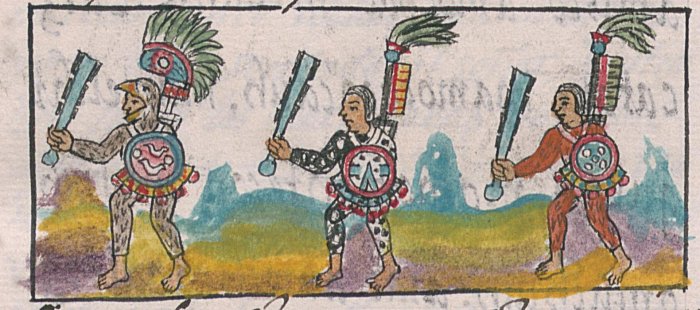Fearsome Aztec Eagle And Jaguar Warriors Of Mesoamerica
A. Sutherland -AncientPages.com - The Aztec Eagle and Jaguar Warriors were, without doubt, some of the most skilled and feared fighting forces of the ancient world. For 200 years, they were Mesoamerica's most dominant and terrifying warrior force.
An Aztec Jaguar warrior. Unknown author - FAMSI website (Foundation for the Advancement of Mesoamerican Studies, Inc.) - Public Domain
They created a vast and ruthless empire. All went well until they faced an enemy even more potent than themselves, an enemy they could never conquer. This devastating encounter was the beginning of the end.
Aztec Military Organization
The Aztecs were not peaceful people. Warfare played a central role in their society and was the driving force of their economy and religion. Every Aztec male was a warrior and received basic military training, whether trader, craftsman, or farmer, from a young age. Military achievement, particularly taking prisoners, was the only vehicle for upward social movement available for commoners.
Statue of an eagle warrior (cuauhtli), found during excavation of the Templo Mayor of Tenochtitlan.
tnb - - CC BY-SA 2.0
Aztec warriors often went to war to expand the empire and meet the needs they had to provide sacrifices for their beliefs and rituals. The Aztecs were known not instantly to kill their enemies or victims but to bring them home to their ruler, who would sacrifice them in ritual ceremonies.
The Aztecs believed a male should become a great warrior because his duty was to "feed the Sun with the blood of their enemies."
The Aztec army's secret to success was a good organization and well-trained and determined warriors. The Aztecs did not have a permanent or standing army but called up warriors when required. Each town was required to provide a complement of 400 men for campaigns, during which they would remain as a unit led by one of their senior warriors and march under their standard but also be a part of a larger group of 8,000 men. As many as 25 such divisions, or 200,000 men, could be mobilized for a large-scale campaign.
Who Could Become An Aztec Eagle Warrior Or Jaguar Warrior?
The Aztec Empire was organized with a strong central government headed by the emperor. The priests and warrior castes came next; they were made up of nobles who enjoyed a high status in Aztec society. These warriors formed a professional core in Aztec armies and were ranked according to their achievements on the battlefield.
Euatl - a tunic trimmed with feathers. Anthropological Museum in Mexico City.
Sons of nobles were expected to enter into the Eagle Warrior or Jaguar Warrior society and to progress through the ranks. Commoners who excelled in warfare would also be allowed to join the orders.
To become an Eagle Warrior or Jaguar Warrior took work. Training started at a very early age. The Aztecs had a rigid education system. Young boys were trained in fighting, battle tactics, killing, and, most importantly, taking captives. The entire Aztec society was structured to be better at warfare than everybody else simply
 The entrance into the inner chamber of the Eagle Warriors Temple in Malinalco. The temple has a long extended bench that covers half of its inner chamber. There are carved sculptures on the bench of eagles and a jaguar. In the center of the inner chamber, there is a giant carved eagle on the floor. Some believe the center eagle would be used as an altar or throne. Surrounding buildings around Malinalco contained several murals depicting the life of a warrior. In addition, there were murals of dancing eagles and jaguars within structures in Malinalco. Image credit: Joaogabriel - - CC BY-SA 3.0
The entrance into the inner chamber of the Eagle Warriors Temple in Malinalco. The temple has a long extended bench that covers half of its inner chamber. There are carved sculptures on the bench of eagles and a jaguar. In the center of the inner chamber, there is a giant carved eagle on the floor. Some believe the center eagle would be used as an altar or throne. Surrounding buildings around Malinalco contained several murals depicting the life of a warrior. In addition, there were murals of dancing eagles and jaguars within structures in Malinalco. Image credit: Joaogabriel - - CC BY-SA 3.0
The existence and purpose of the males focused on being a great warrior. At 17, young Aztec men became warriors and entered formal military training. Aztec warriors could move up in ranking by capturing enemies.
Death was an essential part of Aztec culture, from sacrifice to burial. Warriors were especially a part of this cycle and cultural aspect. The ceremony was involved when a warrior died either from battle or sacrifice. Captured warriors would be sacrificed to the sun god, and in some cases, the warrior would do the sacrifice.
If a warrior died in battle, his corpse would be burned there on the battlefield rather than in his city-state. An arrow from the fallen warrior on the battlefield would be returned, dressed in the Sun god insignia, and burned. The Aztecs believed that the same place for the afterlife of warriors was also the place for women who died during childbirth.
Aztec warriors and priests as depicted in Folio 65r of the Codex Mendoza, a mid-16th century Aztec codex, wearing battle suits and tilmahtli tunics. Public Domain
Mourning for fallen warriors was a long and sacred process. The mourners, for eighty days straight, would not bathe and groom themselves. These actions were done to wait for that fallen warrior's soul to reach the Sky of the Sun.
To be eligible to join the Eagles or Jaguars, a man had to capture four prisoners in battle. Eagle Warriors were adorned in eagle feathers and wore headgear with an eagle head on it, their faces looking out from an open beak. Jaguars wore suits made from the pelts of pumas (jaguars) and associated themselves with their god of night.
Eagles and Jaguars were the largest warrior societies, and they were the only types of warriors who would be considered full-time warriors. These warriors became leaders and commanders on and off the battlefield. After reaching this rank, they would be regarded as nobles and elite members of Aztec society.
Aztec warriors as shown in the Florentine Codex. Unknown artist. Manuscript written by Bernardino de Sahagún - Public Domain
It is why a warrior's path was a way to change one's social status in Aztec culture. The Aztec emperor granted various rights to the warriors who advanced to the eagle and jaguar orders because of their ability and achievement.
These privileges included the right to wear otherwise proscribed jewelry and daily military attire, to dress in cotton and wear sandals in the royal palace, to eat human flesh and drink octli (pulque) in public, to keep concubines, and to dine in the Royal Palaces.
The Arrival Of The Spaniards
The Spanish conquest of the Aztec Empire began in February 1519, and it was one of the most significant events in the Spanish colonization of the Americas.
When the Spaniards entered Mexico, they engaged the Aztec warriors. The Eagle and Jaguar warriors were courageous, but their weapons were primitive, and they could not defeat the conquistadors. In a violent battle at the "House of the Arsenal," fifteen Spaniards were captured and sacrificed.
The Aztecs'Aztecs' resistance was efficient, and the fighters were brave. Both men and women fought against the Spaniards, but the odds were stacked against them, and they had no chance against the brutal, foreign invasion force.
Written by – A. Sutherland AncientPages.com Staff Writer
Updatd on Sep 14, 2023
Copyright © AncientPages.com All rights reserved. This material may not be published, broadcast, rewritten or redistributed in whole or part without the express written permission of AncientPages.com
Expand for referencesReferences:
More From Ancient Pages
-
 Roman Ship Cargo And Galley Equipment Discovered Underwater In The Caesarea Harbor
Archaeology | Sep 12, 2023
Roman Ship Cargo And Galley Equipment Discovered Underwater In The Caesarea Harbor
Archaeology | Sep 12, 2023 -
 Obscure History Of Upper Mustang: Prehistoric Paintings Discovered In Nepal
Archaeology | Dec 21, 2017
Obscure History Of Upper Mustang: Prehistoric Paintings Discovered In Nepal
Archaeology | Dec 21, 2017 -
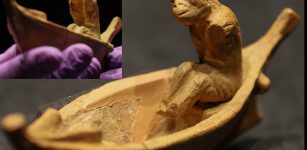 The 2,400-Year-Old Figurine Of Charon -The Ferryman Of The Dead – On Display In Izmir, Turkiye
Archaeology | Nov 21, 2022
The 2,400-Year-Old Figurine Of Charon -The Ferryman Of The Dead – On Display In Izmir, Turkiye
Archaeology | Nov 21, 2022 -
 Archaeology Illuminates Chinese Businesses In Eugene
Archaeology | May 23, 2022
Archaeology Illuminates Chinese Businesses In Eugene
Archaeology | May 23, 2022 -
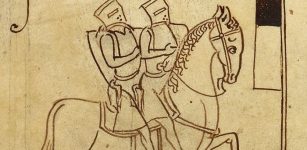 On This Day In History: Knights Templar Arrested In The Kingdom Of France – Oct 13, 1307
News | Oct 13, 2016
On This Day In History: Knights Templar Arrested In The Kingdom Of France – Oct 13, 1307
News | Oct 13, 2016 -
 2000-Year-Old Room With Frescoes Discovered In Central Rome, Italy
Archaeology | Dec 4, 2015
2000-Year-Old Room With Frescoes Discovered In Central Rome, Italy
Archaeology | Dec 4, 2015 -
 Tiny Points Made By Homo Sapiens 54,000 Years Ago Found In Mandrin Cave
Archaeology | Feb 23, 2023
Tiny Points Made By Homo Sapiens 54,000 Years Ago Found In Mandrin Cave
Archaeology | Feb 23, 2023 -
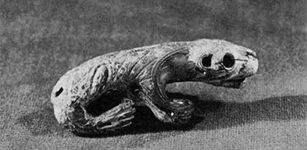 Ancient City Of Ipiutak Was Built By A Fair-Haired Race With Blue Eyes And Not Us – The Inuit Say
Featured Stories | Apr 23, 2019
Ancient City Of Ipiutak Was Built By A Fair-Haired Race With Blue Eyes And Not Us – The Inuit Say
Featured Stories | Apr 23, 2019 -
 On This Day In History: Great Sheffield Flood – Largest Man-Made Disaster Occurred In England – On Mar 11, 1864
News | Mar 11, 2017
On This Day In History: Great Sheffield Flood – Largest Man-Made Disaster Occurred In England – On Mar 11, 1864
News | Mar 11, 2017 -
 Giant Balor Of The Evil Eye – Terrifying Fomorian King And Grandfather Of Celtic God Lugh
Celtic Mythology | Apr 30, 2018
Giant Balor Of The Evil Eye – Terrifying Fomorian King And Grandfather Of Celtic God Lugh
Celtic Mythology | Apr 30, 2018 -
 Dismantled Ancient Stone Circle In West Wales Was Used To Rebuilt As Stonehenge
Archaeology | Feb 13, 2021
Dismantled Ancient Stone Circle In West Wales Was Used To Rebuilt As Stonehenge
Archaeology | Feb 13, 2021 -
 Neanderthal Genes Influence Your Mood And Much More – Study Shows
Archaeology | Oct 6, 2017
Neanderthal Genes Influence Your Mood And Much More – Study Shows
Archaeology | Oct 6, 2017 -
 Patasola: Hideous One-Legged Female Vampire Who Kills Driven By Hatred In Colombian Folklore
Featured Stories | Jul 26, 2019
Patasola: Hideous One-Legged Female Vampire Who Kills Driven By Hatred In Colombian Folklore
Featured Stories | Jul 26, 2019 -
 Were The Viking Berserkers True Or Drug Addicted Warriors Fighting In Trance?
Featured Stories | Feb 3, 2015
Were The Viking Berserkers True Or Drug Addicted Warriors Fighting In Trance?
Featured Stories | Feb 3, 2015 -
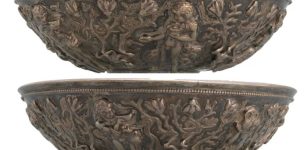 Surprising Discovery Reveals Ancient Tibetan Bowl Shows Alexander The Great – The Jewish Version And Not The Homer’s Iliad
Archaeology | Apr 28, 2022
Surprising Discovery Reveals Ancient Tibetan Bowl Shows Alexander The Great – The Jewish Version And Not The Homer’s Iliad
Archaeology | Apr 28, 2022 -
 Petronella Oortman And Her Giant Dolls’ House
Featured Stories | Jul 10, 2019
Petronella Oortman And Her Giant Dolls’ House
Featured Stories | Jul 10, 2019 -
 European Dogs Doubled In Size From 8,000 To 2,000 Years Ago – New Study Shows
Archaeology | Jun 3, 2022
European Dogs Doubled In Size From 8,000 To 2,000 Years Ago – New Study Shows
Archaeology | Jun 3, 2022 -
 Mysterious Mythical Tree Connected To Strange Islands Found By Ancient Explorers
Featured Stories | Apr 13, 2024
Mysterious Mythical Tree Connected To Strange Islands Found By Ancient Explorers
Featured Stories | Apr 13, 2024 -
 Surprising Discovery Of Ancient Silver Coin Depicting Viking King Harald Hardrada In Hungary
Archaeology | Jun 20, 2022
Surprising Discovery Of Ancient Silver Coin Depicting Viking King Harald Hardrada In Hungary
Archaeology | Jun 20, 2022 -
 Crypts, Coffins, Artifacts And Wooden Church Remains Under The Floor Of Basilica In Poland
Archaeology | Mar 5, 2018
Crypts, Coffins, Artifacts And Wooden Church Remains Under The Floor Of Basilica In Poland
Archaeology | Mar 5, 2018





